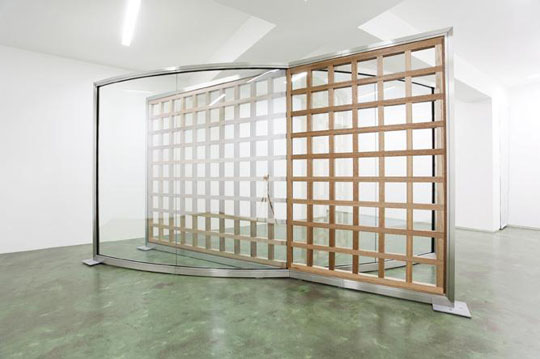New York-based Dan Graham is a pioneer of conceptual art who has defied convention throughout most of his 40-year career. Born in Illinois and raised primarily in New Jersey, he started out by creating text-based concept pieces intended for distribution in magazines. Then he moved on to performances — using video recorders, live-feed monitors and mirrors to complicate the relationships between performer and spectator. He has since become known for making pavilions, large-scale works fabricated from two-way mirror glass and metal that balance between artwork and architecture.
For his current exhibition at the Taka Ishii Gallery in Tokyo's Koto Ward — his first at a commercial gallery in Japan since 1996 — Graham has made a new pavilion, titled "Wood Grid Crossing Two-way Mirror," that's comprised of a rectangular grid of wooden bars intersected by a curving form made out of two-way mirror glass and aluminum. Other works on display include original photographs from Graham's iconic "Homes for America" series (begun 1966), which turn the uniformity of the suburban landscape into a meditation on minimalism.
The Japan Times met with Graham prior to the opening of his exhibition to discuss his work and the myriad ideas and artists that inspire it.



















With your current subscription plan you can comment on stories. However, before writing your first comment, please create a display name in the Profile section of your subscriber account page.